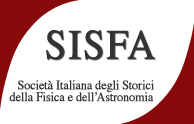Conveners
Dalla Vecchia Teoria dei Quanti alla Meccanica Quantistica / From the Old Quantum Theory to Quantum Mechanics
- Chairperson: Ivana Gambaro and Valeria Zanini
Dalla Vecchia Teoria dei Quanti alla Meccanica Quantistica / From the Old Quantum Theory to Quantum Mechanics
- Chairperson: Ivana Gambaro
Dalla Vecchia Teoria dei Quanti alla Meccanica Quantistica / From the Old Quantum Theory to Quantum Mechanics
- Chairperson: Enrico Giannetto
Dalla Vecchia Teoria dei Quanti alla Meccanica Quantistica / From the Old Quantum Theory to Quantum Mechanics
- Chairperson: Enrico Giannetto
The aim of this talk is to provide a historical reconstruction of the relationship between Italian physics and quantum mechanics during the period from 1913 to 1938.
This timeframe begins with the accidental discovery of a quantum effect on spectral lines by the then-unknown Italian physicist Antonino Lo Surdo—an effect discovered independently and simultaneously by Johannes Stark, later...
The year 2025 marks the centennial of Heisenberg’s seminal paper that gave rise to quantum mechanics. Its impact remains as profound today as it was then: indeed, 2025 has been declared the International Year of Quantum Science and Technology, a testament to the ongoing influence of quantum theory on our understanding of the world. However, the emergence of quantum mechanics was neither sudden...
This contribution offers an unprecedented retrospective on the editorial story of “Alchimia del tempo nostro”, a book co-written by Ginestra Amaldi and Laura Fermi. It is a story holding a special historical-scientific interest and human value, which unfolds against the backdrop of the 1930s and the Second World War. The events are reconstructed through the documents emerged from the archive...
This talk revisits a lesser-known trajectory in the development of quantum theory, beginning with Louis de Broglie’s 1924 doctoral thesis, in which he first proposed that waves guide particles. This idea introduced a radically different view of quantum phenomena. This thread was taken up and developed further by David Bohm in 1952, offering a clear and coherent theoretical framework that...
In an interview with Thomas Kuhn, Léon Rosenfeld commented that his oft-cited 1933 paper with Bohr on the measurability of the electromagnetic field was like Klopstock's Messiah: everyone seemed to agree that it was a masterpiece, but few were actually reading it. The situation, quite perplexingly, persists to this day, even if we include philosophers and historians of physics. This paper...
On March 27th, 1927, Heisenberg published the paper in which he introduced the uncertainty relations through his well-known γ-ray microscope thought experiment. Since then, debates and commentaries on the origin of the uncertainty relations have continued for a century (see, for instance, Bacciagaluppi and Valentini 2009; Beller 1999; Brown and Redhead 1981; Hilgevoord and Uffink 1985, 2024;...
Niels Bohr's concept of Complementarity consists of a profound rethinking of scientific objectivity. It stands as a fundamental and revolutionary contribution to modern physics that, however, remains regrettably underappreciated even a century after its first presentation. This neglect is mainly due to a persistent misunderstanding of both the concept itself and the intellectual path that led...

